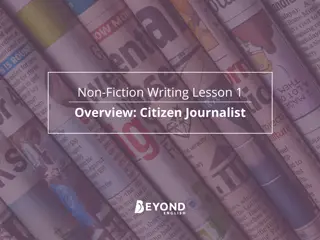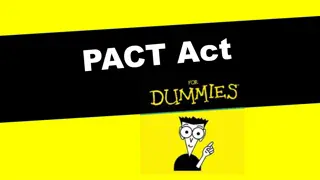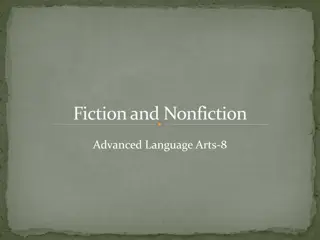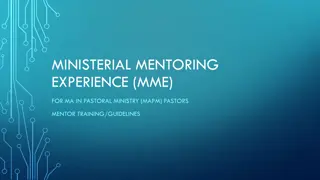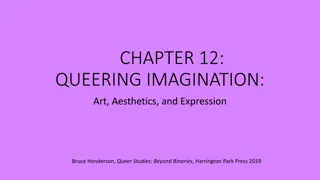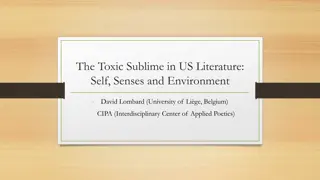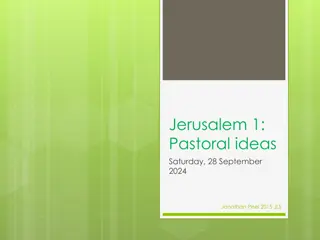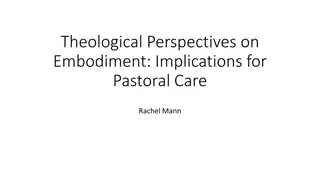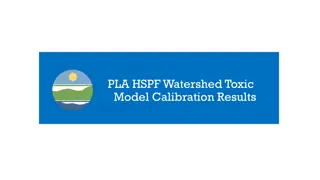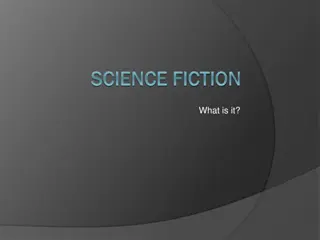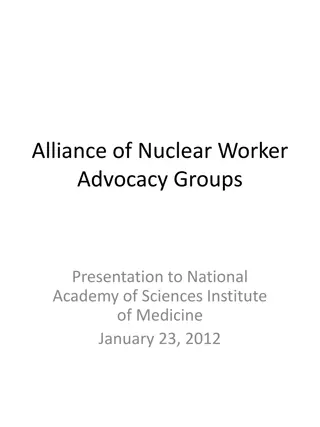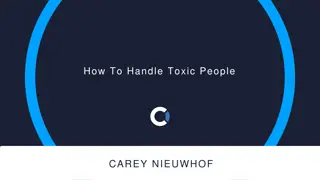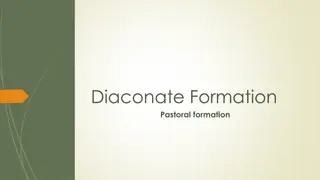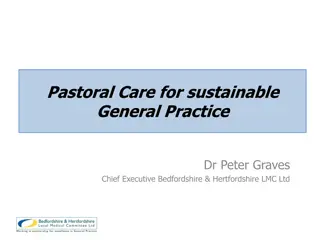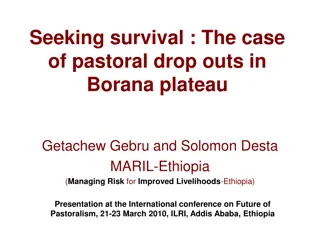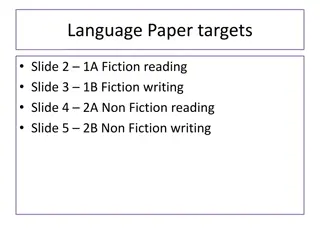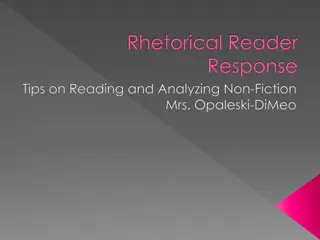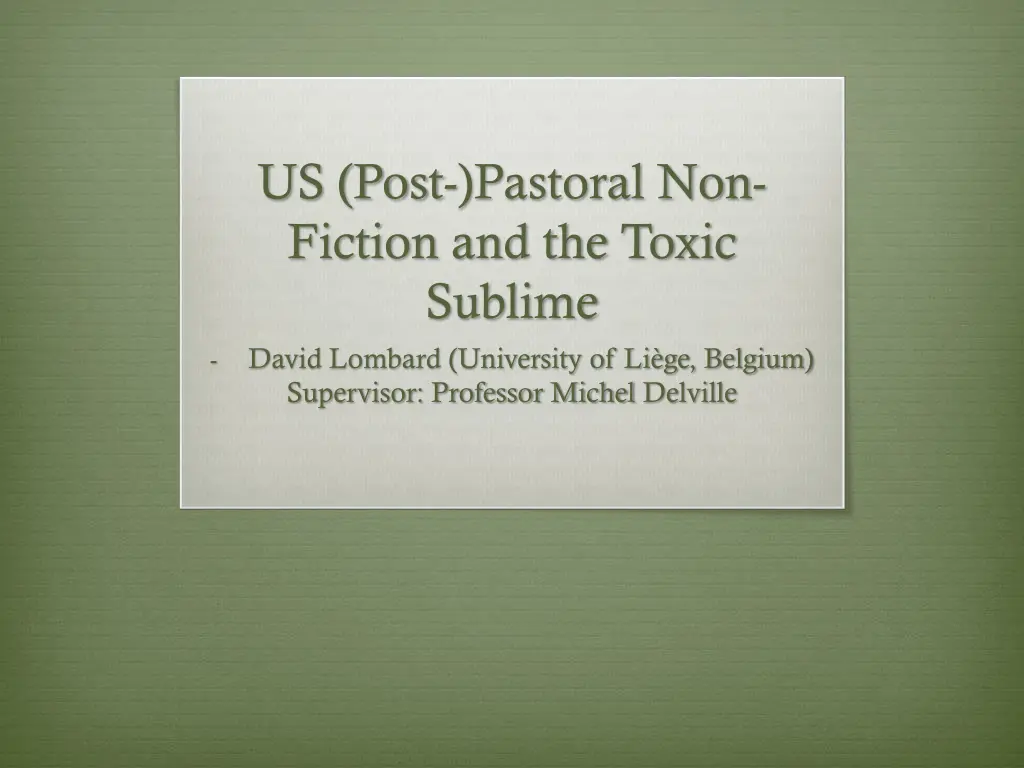
Exploring the Toxic Sublime in US Literature
Delve into the realms of US (Post-)Pastoral Non-Fiction and the Toxic Sublime as David Lombard navigates the ecocritical landscape, uncovering the tensions within the toxic sublime and its representation in American literature. Discover the essence of the post-pastoral mode, repossessing an ecocentric view that transcends idealization and delves into the intricate relationship between humanity and nature. Explore the complexities of toxicity and sublime in art and environment, contemplating the manufactured landscapes and toxic consciousness prevalent in US literary discourse.
Uploaded on | 0 Views
Download Presentation

Please find below an Image/Link to download the presentation.
The content on the website is provided AS IS for your information and personal use only. It may not be sold, licensed, or shared on other websites without obtaining consent from the author. If you encounter any issues during the download, it is possible that the publisher has removed the file from their server.
You are allowed to download the files provided on this website for personal or commercial use, subject to the condition that they are used lawfully. All files are the property of their respective owners.
The content on the website is provided AS IS for your information and personal use only. It may not be sold, licensed, or shared on other websites without obtaining consent from the author.
E N D
Presentation Transcript
US (Post-)Pastoral Non- Fiction and the Toxic Sublime David Lombard (University of Li ge, Belgium) Supervisor: Professor Michel Delville -
US (Post-)Pastoral Non-Fiction and the Toxic Sublime To read more: Lombard, David, American Literature and the Toxic Sublime , Elements (to be published in 2018). Elements: International series of short essays in different languages and electronic format (PDF and ePub). https://www.quodlibet.it/catalogo/collana/75 + future PhD project.
The Post-Pastoral Mode A more ecocentric repossession of avoid[s] the traps of idealisation in seeking a discourse that can both celebrate and take some responsibility for nature without false consciousness (Gifford, 1999). pastoral that = considers nature not as neutral but as undivided from humanity and aims at examining our relationship with our physical environment ecocritical reading of pastoral literature that >< the traps of idealisation and pastoral sentimentalism
The Toxic Sublime [T]he tensions that arise from recognizing the toxicity of a place, object or situation, appreciating its mystery, magnificence and ability to inspire awe (Peeples, 2011). while simultaneously = a valuable trope in the study of the interface between art and our physical environment, which could be extended to the recent history of American literature.
Representing Toxicity in US Literature Toxic consciousness (Deitering, 1999). [P]ervasive problem of toxic waste Toxic discourse (Buell, 2001). The environmental hazard due to chemical modification by human agency anxiety arising from perceived threat of Ecosickness (Houser, 2016). [P]ervasive dysfunction that cannot be confined to a single system and environmental, social, shows the imbrication of human and environment links and up ehticopolitical the biomedical, and
Why Choose the Toxic Sublime? Instead of urging the reader or beholder to fall in the traps of idealisation of natural beauty and to feel awe when contemplating every human effort to master the environment, the aesthetics of the toxic sublime makes us become aware of the environmental problems caused by such efforts and, consequently, to reconsider the landscape from an ecocritical perspective. unseen or intangible
US (Post-)Pastoral Non-Fiction and the Toxic Sublime: Thoreau s Walden (1854) Nature VS the rattle of railroad cars (= the machine, industrialism, technology) The natural VS the technological landscapes [ ] when I hear the iron horse make the hills echo with his snort like thunder, shaking the earth with his feet, and breathing fire and smoke from his nostrils (what kind of winged horse or fiery dragon they will put into the new Mythology I [do not] know), it seems as if the earth had got a race now worthy to inhabit it. If all were as it seems, and men made the elements their servants for noble ends! (Thoreau, 1854). [T]he natural sublime [is] making way for the technological sublime (Brinded, 2015).
US (Post-)Pastoral Non-Fiction and the Toxic Sublime: Thoreau s Walden (1854) >< the commerce , the new market economy or capitalism & consumerism The toxic sublime to analyse the poisoned nature of our relationship to and perception of specific places, objects, or situations, which was caused by progress.
US (Post-)Pastoral Non-Fiction and the Toxic Sublime: Thoreau s Walden (1854) The multi-sensorial approach to landscape Thoreau is refreshed and expanded when the freight train rattles past [him], and [] smell[s] the stores which go dispensing their odors all the way from Long Wharf to Lake Champlain, reminding [him] of foreign parts, of coral reefs, and Indian oceans, and tropical climes, and the extent of the globe (Thoreau, 1854). [L]ower senses of smell, taste and to a lesser extent touch were regulated to the lowest position in the hierarchy, excluded from the realm of aesthetic judgement while, in fact, they enrich and complexify human perception (Delville, 2016).
US (Post-)Pastoral Non-Fiction and the Toxic Sublime: Leopold s A Sand County Almanac (1949) Human sense of smell < the dog s sense of smell My dog [ ] thinks I have much to learn about partridges, and, being a professional naturalist, I agree. He persists in tutoring me, with calm patience of a professor of logic, in the art of drawing deductions from an educated nose. I delight seeing him deduce a conclusion, in the form of a point, from data that are obvious to him, but speculative to my unaided eye. Perhaps he hopes his dull pupil will one day learn to smell (Leopold, 1949).
US (Post-)Pastoral Non-Fiction and the Toxic Sublime: Leopold s A Sand County Almanac (1949) >< capitalism, consumerism, modern comfort (technology, the machine, gadgets ) Multi-sensorial perception (= the philosophical eye ) to understand wildness , which is the fountain of energy flowing through a circuit of soils, plants, and animals that the high priests of progress could never grasp and that may define life on earth. (Leopold, 1949). = the toxicity of modern civilisation, mechanisation and technology as altering human perception
US (Post-)Pastoral Non-Fiction and the Toxic Sublime: Ken Ilgunas s Walden on Wheels (2013)
US (Post-)Pastoral Non-Fiction and the Toxic Sublime: Ken Ilgunas s Walden on Wheels (2013) >< capitalism, consumerism, modern technologies (television, video games, virtual reality) The Alaskan aurora as a sublime revelation: a desert storm, a milion individual particles of light whipping over dunes in patterns that no human mind could comprehend or computer- generate = one of these glories that the foul cloud of [modern] civilization hid from [our] view that we do not even miss because we can only miss what we once possessed (Ilgunas, 2013). = the toxicity of modern medias and virtual reality as altering human perception and understanding of our physical environment => the new Age of Missing Information (McKibben, 1992).
US (Post-)Pastoral Non-Fiction and the Toxic Sublime: CONCLUSION These non-fiction texts illustrate... a critical stance towards the impact of consumerism, technology and progress on our relationship with our physical environment; capitalism, distinct forms of toxicity that characterise this relationship; And thus prompt us to examine the problematic nature of technology and progress. The toxic sublime = a new perspective in the ecocritical study of post-pastoral literature.
Works Cited: Primary Sources Burtynsky, Edward, Manufactured Landscapes (New Haven: Yale University Press, 2003). Carson, Rachel, Silent Spring (London: Penguin Classics, 2000). Ilgunas, Ken, Walden On Wheels: On the Open Road from Debt to Freedom (Las Vegas: Amazon Publishing, 2013). First published: New Harvest Publishing (5/14/13). Leopold, Aldo, A Sand County Almanac (New York: Ballantine Books, 1986). Thoreau, Henry D., Walden and Civil Disobedience (New York: Signet Classics, 2012).
Works Cited: Secondary Sources Brinded, Nicolas, The myth making of nation building: Walden and the technological sublime , Myth and Nation, Vol. 23 (Spring 2015). Bru, Sascha, De Bruyn, Ben, and Delville, Michel (eds.), Literature Now: Key Terms and Methods for Literary History (Edinburgh: Edinburgh University Press, 2016). Corey, Joshua, A Long Foreground: Exploring the Postmodern Pastoral , Joshua Corey & G.C. Waldrep (eds.) The Arcadia Project (Boise: Ashatha Press, 2012). Gifford, Terry, Pastoral (London: Routledge, 1999). Glotfelty, Cheryll & Fromm, Harold (eds), The Ecocriticism Reader: Landmarks in Literary Ecology (Athens: The University of Georgia Press, 1996). Houser, Heather, Ecosickness in Contemporary U.S. Fiction: Environment and Affect (New York: Colombia University Press, 2016). Marx, Leo, The Machine in the Garden: Technology and the Pastoral Ideal in America (New York: Oxford University Press, 2000). McKibben, Bill, The Age of Missing Information (New York: Random House, 2006). Peeples, Jennifer A., Toxic Sublime: Imaging Contaminated Landscapes , Environmental Communication: A Journal of Nature and Culture, Vol. 5, No. 4 (December 2011).

